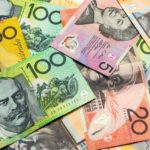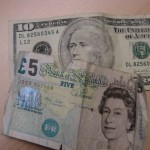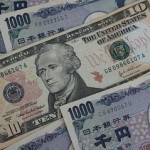 Gold prices were little changed during early trade in Europe today, as investors eyed key US economic data, due later today. Conflicts in Ukraine and in the Middle East offered some support, though rate hike outlooks were the driver this morning.
Gold prices were little changed during early trade in Europe today, as investors eyed key US economic data, due later today. Conflicts in Ukraine and in the Middle East offered some support, though rate hike outlooks were the driver this morning.
Gold futures for December settlement traded at $1 300.8 per troy ounce, up 0.12%, by 8:03 GMT on the Comex in New York. Prices ranged from $1 298.5 to $1 301.5 per troy ounce. The precious metal dropped 0.5% on Monday.
“Gold remains in a range with a bias to the downside,” Sarah Xie, a Hong Kong-based analyst at Wing Fung Financial Group Ltd., wrote in a note. “The risk factors this week are the Fed’s minutes and the Jackson Hole meeting, which will give more clues on the rate-hike outlook.”
Silver for September delivery stood for a 0.10% increase at $19.655 per troy ounce, while palladium was at $894.90, just below a 13-year high reached yesterday. October platinum was up 0.09% at $1 447.55.
The Feds July meeting minutes will be released this Wednesday, as traders seek first-hand cues for rate-hike and quantitative easing (QE) outlooks for the worlds largest economy. The Fed kept the benchmark interest rate unchanged at 0.25%.
If investors see a more hawkish stance on rates it would support the dollar, as a higher borrowing cost for the US currency sooner than previously thought would be on the table.
Since gold, like many other commodities, is mostly traded in dollars, the value of the US currency plays a major role in the metal’s investment appeal, with a stronger dollar lifting the price of gold to foreign currencies and vice versa.
Additionally, investors are expecting a close of the Feds QE program by late 2014, as suggested by regular and systemic $10 billion trims in monthly spending. Should traders read signs of a premature close of the program in the minutes, it would be supportive for the dollar, but would hurt equities.
Since QE pumps billions of government dollars into the economy on a monthly basis, a cut in such support would put pressure on a lot of companies, lowering their profit outlooks, and their shares price.
Generally, equities have an opposite correlation with safe havens, such as gold. When investors see fewer investment risks, they channel money into the riskier, but more profitable equities, such as stocks, lifting their price and hurting havens.
Dollar, US data
The US Dollar Index, which measures the greenback’s strength against six other major currencies, added 0.16% on Monday, pressuring gold, and by 7:24 GMT today was up a further 0.05% and 81.67. Meanwhile, US stocks logged sizable gains yesterday, with all three major indices adding between 0.8% and 1.1%, also lowering golds appeal.
Investors now look to US economic data for a more comprehensive outlook. Foremost, CPI for July is expected at 2.0% on an annual basis, while core CPI, which excludes the more-volatile food and energy, is forecast at 1.9%. The Fed has set a target of 2.0% inflation, and sizable divergence from it would spell a dynamic session for the dollar, as traders would weigh the immediate economic figure with updated rate expectations.
Also today, US housing data will be posted, with expectations of sizable monthly growth for both building permits and housing starts.
Elsewhere, holdings at the SPDR Gold Trust, the largest exchange-traded gold-backed fund, added 2 tons on Monday, signaling investors had not completely retreated from gold, as global tensions were seen as worrying.
Ukraine
The conflict in Ukraine took a grizzly turn yesterday, as a convoy of refugees fleeing from the embattled city of Luhansk, escorted by Ukrainian military, came under attack. The convoy was hit by Grad rocket artillery and by mortar fire, Ukrainian authorities reported, adding that many people, including women and children, have died.
Kiev said “terrorists” armed by Russia were behind the attack, while pro-Russian rebels put the blame on the Ukrainian military.
Earlier, Kiev reported it has destroyed a column of armored vehicles entering Ukraine from Russia, while another column of rocket launchers was also seen entering rebel-controlled territory from Russia.
The Kremlin has repeatedly denied supplying rebels with weaponry such as the Buk missile launcher, which is thought to have downed the Malaysian airliner in June, killing 298 civilians.
The confrontation between the West and Russia over Ukraine brought forth the lowest point in relations since the Cold War. Several rounds of economic sanctions were imposed by both sides, as Russia accuses the West of trying to lure Ukraine away from the Kremlin, though any significant impact on either side is yet to be seen. Traders have so far shrugged off risks over a possible escalation, despite some analysts, and NATO, warning of a possible Russian intervention.
Middle East
President Barack Obama said yesterday that US forces have carried out 35 air strikes which allowed for the recapturing of the Mosul dam and impaired the Islamic State (IS) offensive, and will continue limited air strikes against the rebels.
Earlier, Kurdish and Iraqi forces retook the Mosul dam – Iraq’s largest, with the help of U.S. air support and now need to clear a 2-kilometer stretch of mines and bombs.
In the Gaza Strip, a ceasefire which came into effect on Wednesday and was due to expire on Monday was extended for another 24 hours following talks in Cairo, Palestinian and Israeli officials said. Palestinian envoys said the “war is behind us now”, signaling an extension of the ceasefire. Israel, however, has demanded a full demilitarization of Gaza, something seen as unacceptable by Hamas, as a precondition to any permanent peace.
More than 2 000 Palestinians, mostly civilians, died in the latest episode of the conflict, with 67 Israelis also killed. The UN and the international community have largely condemned Israel’s indiscriminate fire in a densely populated area, resulting in an enormous loss of life.
Technical support and resistance levels
According to Binary Tribune’s daily analysis, December gold’s central pivot point on the COMEX stands at $1 300.2. In case futures manage to breach the first resistance level at $1 304.0, the contract will probably continue up to test $1 308.6. In case the second key resistance is broken, the precious metal will likely attempt to advance to $1 312.4.
If the contract manages to breach the first key support at $1 295.6, it will probably continue to slide and test $1 291.8. With this second key support broken, the movement to the downside may extend to $1 287.2.





